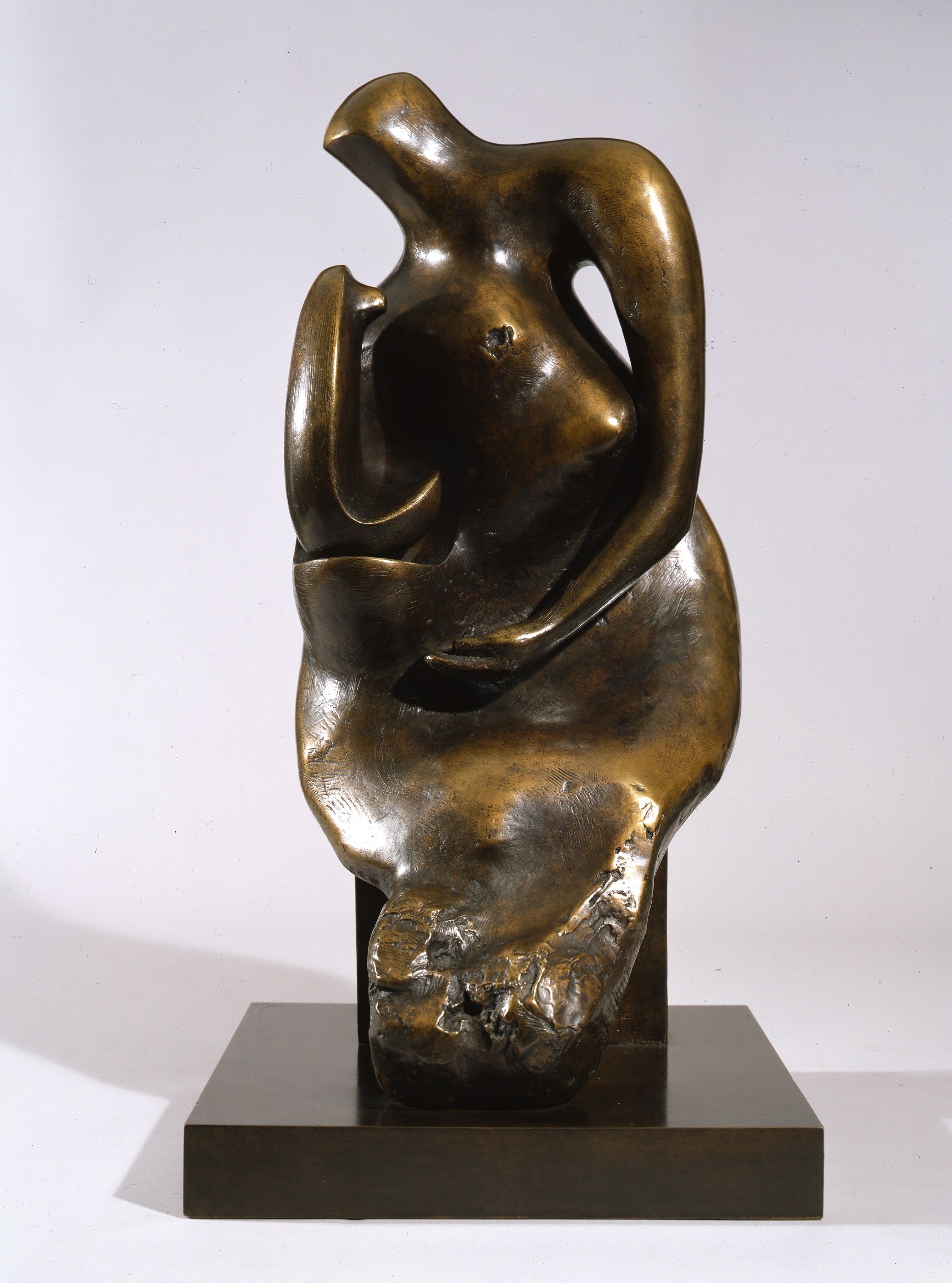Henry Moore

Though Moore’s sculptures are seldom abstract, they are primarily formal rather than narrative. This perhaps accounts for the artist’s limited and recurring compositions, like the motif of mother and child that appears in this work. As a pictorial base, such subjects gave themselves to formal reinvention, repeated as variations on the same theme. In image, Moore looked for the archetypal, the “inexhaustible", for those subjects “from the beginning of time.” He returned most often to the image of mother and child towards the end of his life, in the years when Block Seat was cast. While it had long been a purely compositional element, the motif appears to have assumed greater significance to the artist in his old age as a symbol of procreation, protection, and continuity.
b.1898, Castleford; d.1986, Perry Green
“There is in Nature a limitless variety of shapes and rhythms,” Henry Moore said of his formal preoccupations, “from which the sculptor can enlarge his form-knowledge experience.” An artist deeply invested in the integrity of his material, Moore’s early works were made by shaping stone and wood without preparatory plan. Such direct carving allowed the natural material to dictate the final form – faults in quarried stone suggested seams, growth patterns in wood lines to be followed. Moore’s "truth to material," however, would later shift in the mid-1940s. He began working in modelling clay, wax, and plaster, making maquettes for works later scaled up and cast in bronze. Here, the soft and pliable mediums gave shape to new expressions, but their metal casts could not claim the material veracity of the model. Instead, the artist found a new truth – a truth in line, rhythm and shape reflected in the natural world. “The observation of nature,” he wrote simply, “is part of an artist’s life.” Expressed first in medium and later in form, nature remained Moore’s guiding muse. It is no wonder then that he built his monumental, organic sculptures to stand outside, where they might remain in conversation with the scenes and images that shaped them.